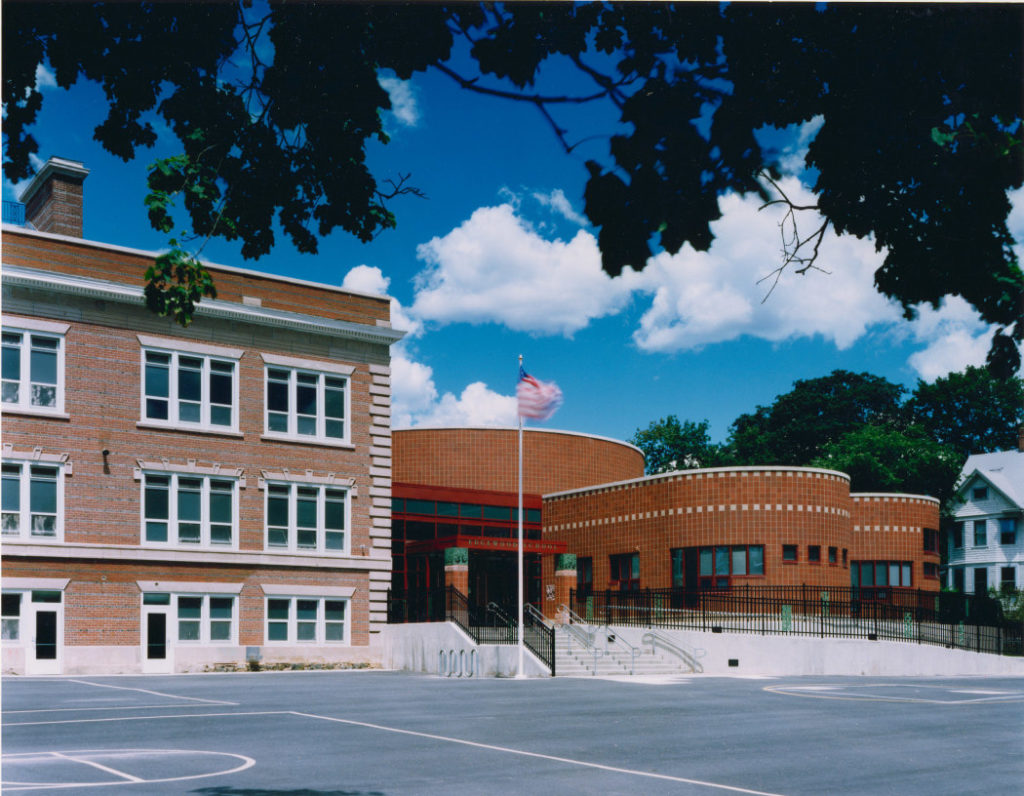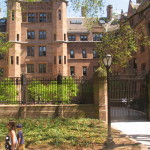
In February 2020, West Woods School, an elementary school in Hamden Connecticut, cast two Black students as enslaved Africans for a school play.
The play intended to teach students about the slave trade. The teacher in charge of this class assignment apologized to the students’ parents, and school officials released a statement about this incident. A year later – and with the rise of political tension – this incident begs the question of how aware public schools in New Haven are when it comes to Blackness and how these schools teach their students about Black history. One school that has taken action is Edgewood, an intra-district magnet school in New Haven. Members of Edgewood Creative Thinking through STEAM Magnet School speak on this issue.
“The deeper question,” Dr. Nicholas Perrone, principal of Edgewood, explains, “is how do we make sure that people don’t even consider [the incident] as being an option and that we explore ways that address the concept of race and racism in a way that is more healing.”
According to Perrone, Edgewood has a series of actions when it comes to race and equity. They are trying to create a common language, define terms, and rewrite the school’s mission and vision in order to reflect a more progressive understanding about race and identity. The school plans to have teachers attend curriculum development sessions and trainings in order to make Black history a part of the school’s core curriculum. Currently the school uses Newsela, an online program which provides students with a marginalized perspective in every unit they’re taught in.
“It’s worth noting that we are not focusing on Black History just in the tiny month of February.” Perrone says, “we’re labeling it Black History Season. . .with the understanding that we are incorporating this year-long and we are not trying to only do it and only celebrate at this time.”
The school has decided to celebrate Black History Season with a guest artist program. Students partner up with local artists of color and learn about their work. Set up on Zoom, every Friday, they prepare questions and ask them to the artists during their student assemblies. This program started in late January and will conclude by the end of March. At the end, the students will have met with nine artists ranging from musicians, painters, photographers, and dancers.
“So far the feedback has been very positive,” Perrone remarks, “the level of engagement especially of our middle schoolers has been incredible.”
Luca Rivera, a Black eighth grader who attends Edgewood and has participated in the school’s guest artist program, feels that his school has done a good job talking about Black history.
“But that has only been more recent,” Rivera comments. “In this environment I have now, I feel reflected, but I think that it is important to know that a few years ago I didn’t. It took me a lot to get past that point and know that I am great, that I am a revolutionary, and that I matter. ”
Even though most of Rivera’s teachers are people of color and have tried to incorporate Black history into their teachings, it wasn’t enough. In order to learn anything new, the fourteen year old would have to do his own research at home.
“The only one who was actively teaching me about people that weren’t really talked about as much as they should be in Black history was Mr. Sanders,” Rivera says.
28-year-old Julian Sanders is basketball coach and one of the Black teachers in Edgewood. He teaches Social Studies to seventh and eighth graders and has been teaching at Edgewood for six years.
In efforts to prevent making Black history seem like an elective, Sanders employs a teaching style that focuses on perspective and connection. Sanders doesn’t like to teach about Black trauma, specifically with slavery. Alternatively, he tries to connect Black history with every aspect of American history. Right now, Sanders’ class has been discussing the history of Indigenous people in America, and they have been comparing and contrasting this history with the state of how life is for Black Americans today. His goal is to keep his students aware and help form their own opinions.
“What I want my students to get from what I teach… [is to] be exposed to things and let them take from it what they might,” Sanders says.
Edgewood’s teaching style when it comes to Black history has changed now.
“I appreciate the change,” Luca Rivera admits, “even if things aren’t effectively moving as fast as they should be. . .we are still trying and reaching for change.” To Rivera, the important thing is to make sure that students have a voice and have the chance to use it. “I think that is something this school should be promoting,” he says.
This change in teaching has not only come from the school’s students, teachers like Sanders, and projects like the guest artist program, but also the Edgewood’s Anti-Racism Coalition.
The Anti-Racism Coalition is a parent and guardian group from Edgewood who have been advocating for equitable and anti-racist practices in Edgewood. This group held panel discussions in the summer and fall addressing topics like how to create a school culture community that values students and makes them feel seen. Their goal is to hold the school accountable.
The principal Dr. Perrone says “[the Anti-Racism Coalition] is making sure we are doing our job, and doing the work, and that we are showing results.”
Edgewood is not afraid to talk about Blackness, race, and racism. Perrone explains that the kids are ready and willing to talk about it.
Kelsey Tamakloe ’22


